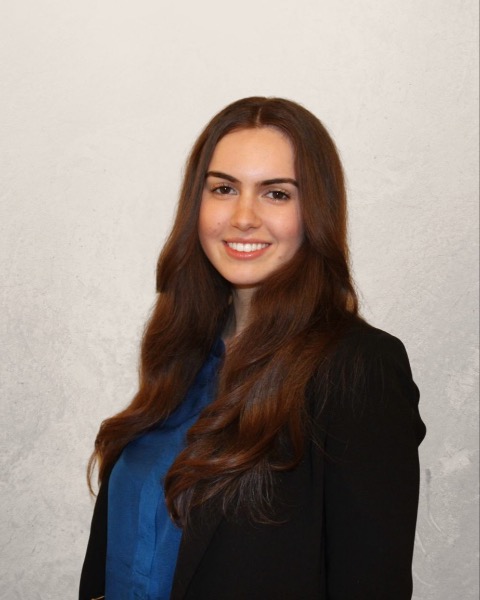Head/Neck Case & Anatomical Studies Posters
Poster: Head/Neck Case & Anatomical Studies Posters
86 - Beyond the Shield: An Atypical Presentation of Thyroid Gland Morphology in a Female Donor
Monday, March 25, 2024
10:15am - 12:15pm US EDT
Location: Sheraton Hall
Poster Board Number: 86
There are separate poster presentation times for odd and even posters.
Odd poster #s – first hour
Even poster #s – second hour
Co-authors:
There are separate poster presentation times for odd and even posters.
Odd poster #s – first hour
Even poster #s – second hour
Co-authors:
Megan Guiles - Oakland University William Beaumont School of Medicine; Audrey Lam - Oakland University William Beaumont School of Medicine; Neel Patel - Oakland University William Beaumont School of Medicine; Conrad Phelan - Oakland University William Beaumont School of Medicine; Mandy Zhu - Oakland University William Beaumont School of Medicine; Malli Barremkala - Associate Professor, Department of Foundational Medical Studies, Oakland University William Beaumont School of Medicine

Sara Trumza
Oakland University William Beaumont School of Medicine
Rochester Hills, Michigan, United States
Presenting Author(s)
Abstract Body : Introduction:
The anatomical presentation of the thyroid gland is heavily influenced by its embryological development. Tissue begins its descent from the foramen cecum of the tongue through the thyroglossal duct until it reaches the 2nd and 3rd rings of tracheal cartilage. Understanding the embryological basis is important in comprehending anatomical variations that are seen in the thyroid gland.
Methods:
Routine anatomical dissection was conducted by first year medical students on 21 body donors at Oakland University William Beaumont School of Medicine (OUWB).
Results:
An anatomical variation of the thyroid gland was discovered on a 94-year-old female donor. The donor was found to have a thyroid gland with the midpoint of its isthmus to the right of midline and medial border of the left lobe at approximately midline. The isthmus was angled superolaterally toward the right side. Additionally, a pyramidal thyroid lobe was identified, attached to the right lobe and extending to the hyoid bone at the midline. The pyramidal lobe is connected to the hyoid bone via a short band of fibrous tissue. No abnormalities in thyroid neurovasculature were observed.
Conclusion:
This case underscores the need for proper identification of thyroid variations to guide surgical procedures, ensure complete removal of tissue in a total thyroidectomy, and facilitate post-operative care. Proper documentation of anatomical variations has to be emphasized to avoid complications in procedures involving the thyroid gland.
Clinical Significance:
Understanding the anatomical variations is clinically significant in differentiation from other pathologies, such as thyroid nodules, and is crucial for a successful surgical outcome. The considerable variation in the spatial location and morphological characteristics of the pyramidal lobe poses a risk to retained residual tissue, a significant concern in total thyroidectomies and cases of thyroid cancer. Incomplete resection of the pyramidal lobe may contribute to postoperative complications, such as hematoma or damage. Therefore this knowledge is important for surgeons to minimize potential complications and to enhance the patient outcomes in thyroid related procedures.
The anatomical presentation of the thyroid gland is heavily influenced by its embryological development. Tissue begins its descent from the foramen cecum of the tongue through the thyroglossal duct until it reaches the 2nd and 3rd rings of tracheal cartilage. Understanding the embryological basis is important in comprehending anatomical variations that are seen in the thyroid gland.
Methods:
Routine anatomical dissection was conducted by first year medical students on 21 body donors at Oakland University William Beaumont School of Medicine (OUWB).
Results:
An anatomical variation of the thyroid gland was discovered on a 94-year-old female donor. The donor was found to have a thyroid gland with the midpoint of its isthmus to the right of midline and medial border of the left lobe at approximately midline. The isthmus was angled superolaterally toward the right side. Additionally, a pyramidal thyroid lobe was identified, attached to the right lobe and extending to the hyoid bone at the midline. The pyramidal lobe is connected to the hyoid bone via a short band of fibrous tissue. No abnormalities in thyroid neurovasculature were observed.
Conclusion:
This case underscores the need for proper identification of thyroid variations to guide surgical procedures, ensure complete removal of tissue in a total thyroidectomy, and facilitate post-operative care. Proper documentation of anatomical variations has to be emphasized to avoid complications in procedures involving the thyroid gland.
Clinical Significance:
Understanding the anatomical variations is clinically significant in differentiation from other pathologies, such as thyroid nodules, and is crucial for a successful surgical outcome. The considerable variation in the spatial location and morphological characteristics of the pyramidal lobe poses a risk to retained residual tissue, a significant concern in total thyroidectomies and cases of thyroid cancer. Incomplete resection of the pyramidal lobe may contribute to postoperative complications, such as hematoma or damage. Therefore this knowledge is important for surgeons to minimize potential complications and to enhance the patient outcomes in thyroid related procedures.

